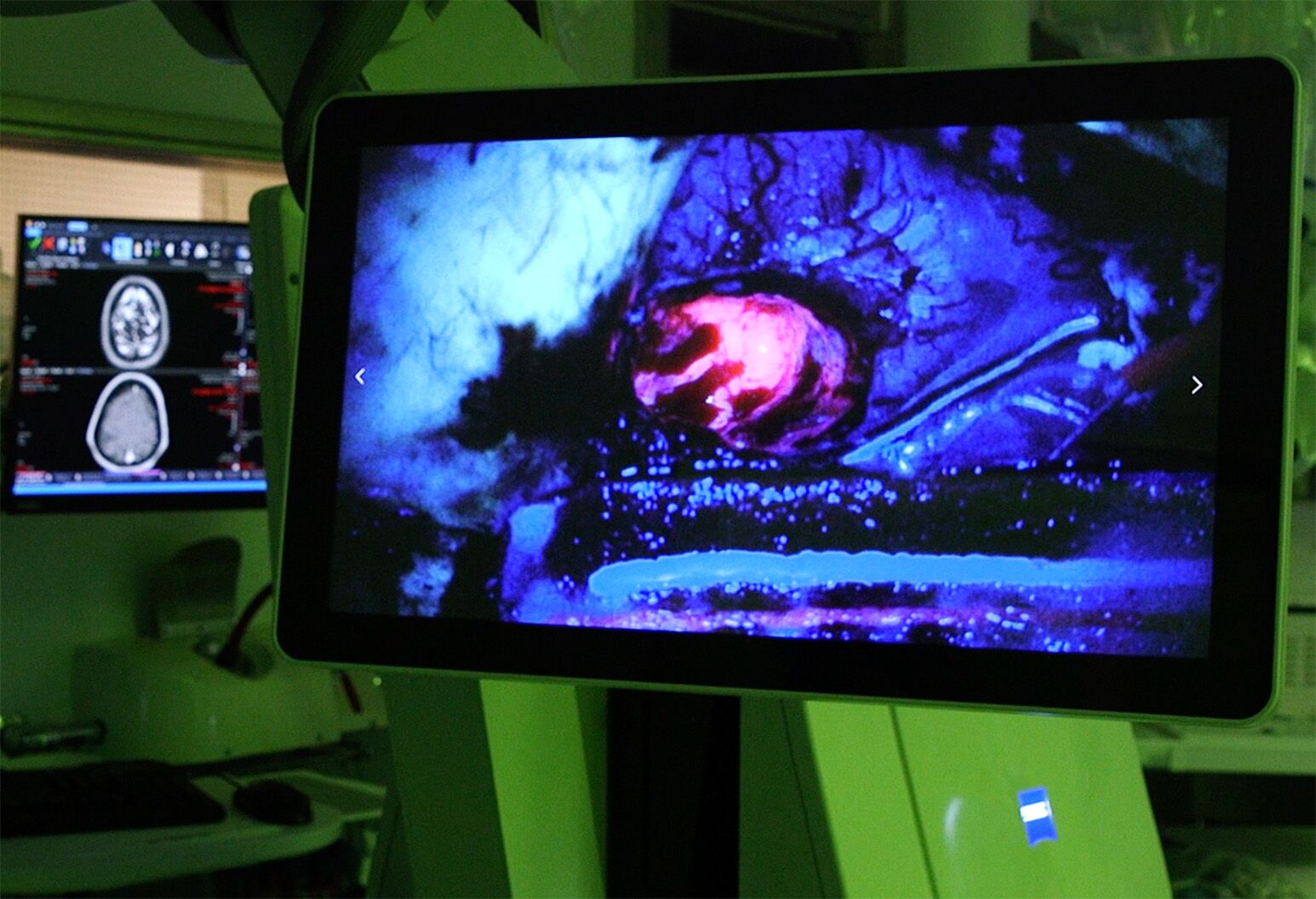Our representatives are available to schedule your appointment Monday through Friday from 9am to 5pm.
For a Northwell ambulance, call
(833) 259-2367.

Neurosurgery is undergoing a technological revolution, and Robert Kerr, MD, PhD, is at the forefront. From glowing tumors to 3D-printed skulls, the chief of neurosurgery at Northwell Huntington Hospital shares how innovations like Gleolan and diffusion tractography are transforming patient care and allowing for more precise, less invasive procedures.
In this Q&A from the Huntington Connections magazine Vol. 2, 2024, Dr. Kerr introduces some of these technologies and the ways they’re shaping neurosurgical practice at Northwell and health care at large.
While pursuing a physiology degree in Toronto, one of my research projects was with orthopedic surgeons looking at the recovery of nerves and muscles after trauma. I was invited into the operating room, and it was so impactful seeing what neurosurgeons could do that it completely changed my trajectory. I did a master’s in neurophysiology, a neurosurgery residency and then joined the skull-based neural oncology program at the University of Cincinnati. The chairman of that program later recruited me to help build a neurosurgery program for what eventually became Northwell Health.
I’m always looking for ways to reduce the impact of surgeries, including cutting down on the number of surgeries a patient needs. For example, I’ve been perfecting single-step cranioplasties, or skull repairs, for 15 years. Instead of multiple surgeries on the head, we can create 3D-printed models of the skull and a custom implant ahead of time so that I can do the surgery and reconstruction in one shot. It’s so much easier on the patient.
Also, when I was a fellow in Cincinnati, I worked with medical engineers to trial the Nico BrainPath device. Using a 14-millimeter tube — the thickness of a dime — this device gently separates and splits nervous system fibers without causing damage, reducing the risk of harming vital brain functions. When we remove the tube, the fibers go back to normal.
And to reduce stress for patients and their families, I make them personalized videos. These capture the overwhelming amount of information and instructions a person receives from diagnosis to discharge.
Immunofluorescence and diffusion tractography are very exciting.
An immunofluorescence product called Gleolan attaches only to tumor cells, and makes malignant cells glow bright pink under a fluorescent microscope, so I can see exactly where the tumor starts and ends. Removing as much tumor as possible — without compromising healthy cells — equals better patient outcomes.

Robert Kerr, MD, PhD, uses Gleolan to help identify cancerous tumor cells in a patient during surgery at Huntington Hospital.
With diffusion tractography, I can use our MRI scanner to map a patient’s connected neural networks and project this image into the eyepieces of the microscope while I’m operating, so I can avoid the “motor strip” of the brain, which controls movement.
Our capabilities today versus 20 years ago are really phenomenal. Having institutional support and an incredible team to fully embrace innovations in cancer therapeutics, immunotherapies, 3D printing and more make this a really fun field to be in.
Our representatives are available to schedule your appointment Monday through Friday from 9am to 5pm.
For a Northwell ambulance, call
(833) 259-2367.